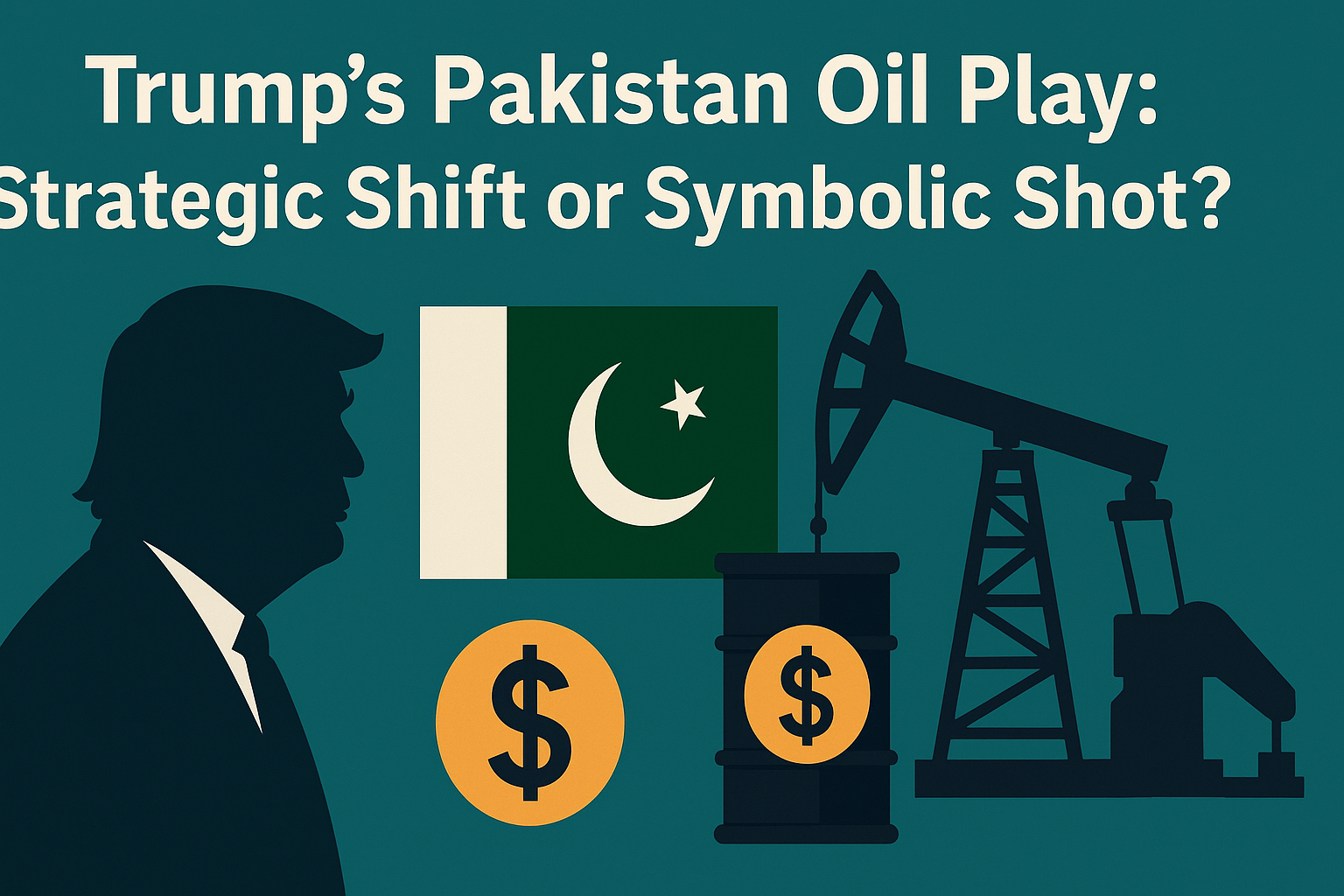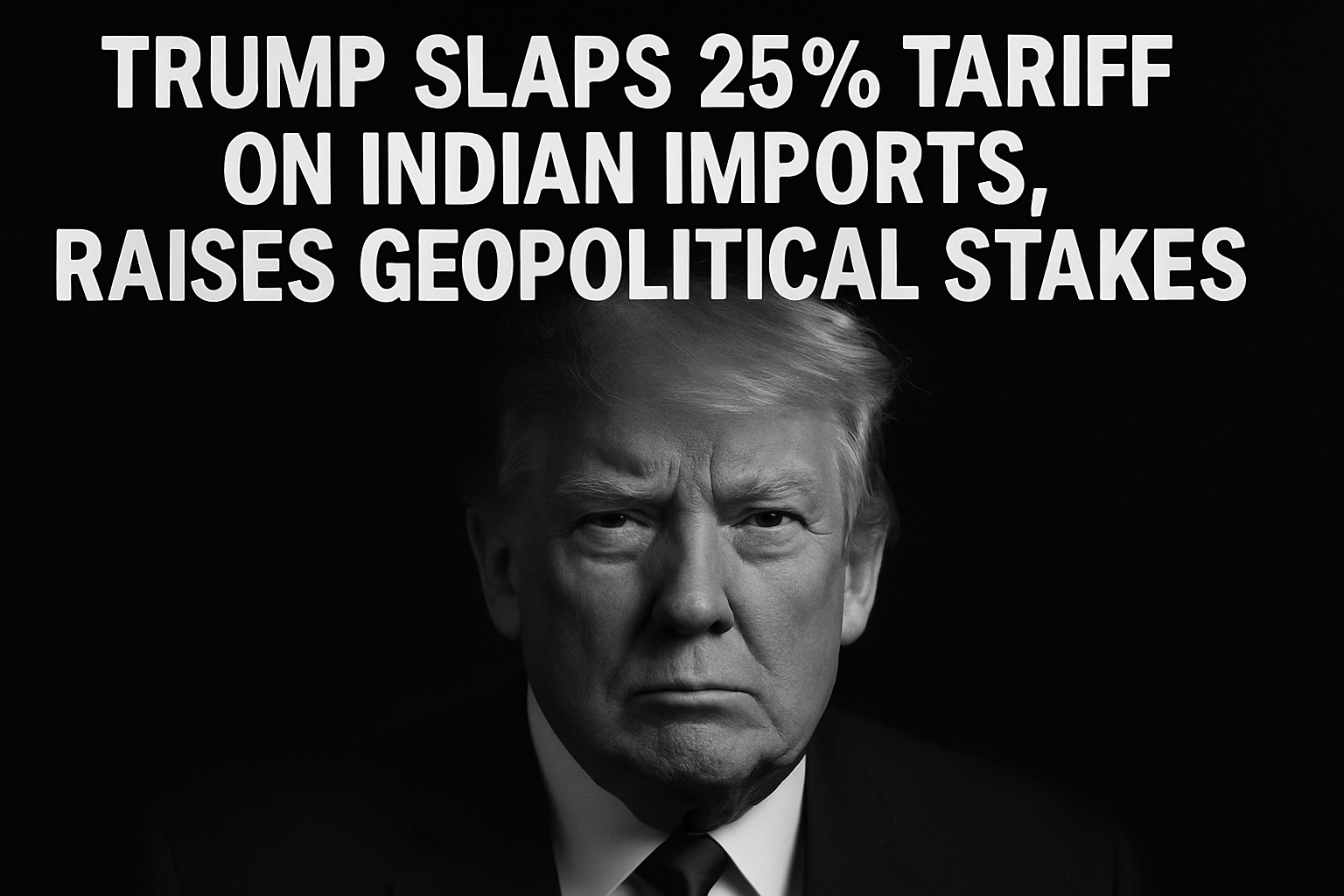On July 30–31, 2025, Donald Trump slapped 25% tariffs on Indian goods, citing oil ties with Russia. Just days later, he announced a new energy partnership with Pakistan. The Indian Army responded with a haunting 1971 throwback, reminding the world of America's role in arming Pakistan. RagaDecode unpacks this collision of memory, oil, and geopolitics.
WHO: The Main Actors
- Donald Trump, U.S. President, reigniting economic pressure and strategic realignment.
- Indian Army (Eastern Command), posting a 1971 newspaper clipping showing U.S. arms worth $2B sent to Pakistan.
- Randhir Jaiswal, MEA Spokesperson, reinforcing India’s sovereign right to choose energy sources.
- Pakistan, newly invited into a U.S.-led oil development alliance.
WHAT: The Chain of Events
Trump accused India of fueling Russia’s war effort by purchasing discounted crude. He simultaneously offered Pakistan support to develop its “massive oil reserves,” suggesting a long-term strategic realignment in South Asia.
India countered via multiple levels: diplomatically through the MEA, economically by defending oil diversification, and symbolically through the Indian Army’s post recalling August 5, 1971—the date of U.S. arms escalation in Pakistan.
WHEN: Timeline of Escalation
| Date | Event |
|---|---|
| Aug 5, 1971 | U.S. arms buildup to Pakistan before Bangladesh Liberation War |
| Feb–June 2025 | India faces growing U.S. scrutiny over continued Russian oil imports |
| July 30, 2025 | Trump announces 25% tariffs on Indian imports |
| July 31, 2025 | Trump reveals U.S.–Pakistan oil partnership plan |
| Aug 5, 2025 | Indian Army posts 1971 clipping: “$2B U.S. arms to Pakistan since ’54” |
WHERE: The Strategic Map
- India’s Position: Largest buyer of Russian crude after China; transitioning to multi-source energy resilience.
- Pakistan’s Pitch: Trump’s oil ambitions signal a U.S. push to develop new energy spheres outside Gulf control.
- Geopolitical Crossfire: India caught between Russian reliability, U.S. demands, and BRICS realignment.
WHY: Trump's Underlying Strategy
- Election optics: Playing the tariff card before the 2025 U.S. elections.
- Economic leverage: Forcing India to reduce trade with Russia and open up agriculture/dairy sectors.
- Geopolitical pressure: Undermining India’s leadership in the Global South and BRICS expansion.
India points out U.S. hypocrisy—Washington continues importing uranium, palladium, and other essentials from Russia, even during wartime.
HOW: India’s Tactical Response So Far
- Narrative Control: Indian Army’s throwback post reframes the debate from oil to strategic memory.
- MEA Assertion: India states energy choices are about affordability and stability—not politics.
- Energy Diversification: State refiners reduced Russian crude by 24% YoY (July 2025).
- Alliance Diplomacy: India strengthens ties in BRICS, SCO, and Global South platforms.
Conclusion Talks: Strategic Shift or Symbolic Shot?
Trump’s Pakistan oil announcement, while bold, may be more symbolic than practical. Pakistan lacks refinery infrastructure, investor confidence, or political stability to become a major oil exporter. The deeper message lies in the optics—challenging India’s energy autonomy and evoking Cold War patterns.
India’s response has been sharp but restrained—invoking history, defending sovereignty, and pivoting economically. Yet questions remain: Will India retaliate economically? Will it cement long-term supply routes outside U.S. purview?
What Could Be India’s Strategic Move?
- Counter-Tariff Action: Trigger WTO dispute mechanisms and suspend concessions worth $725M.
- De-Dollarization: Push BRICS+ for oil trade in rupees or yuan to insulate from future U.S. sanctions.
- Domestic Production Boost: Accelerate exploration in KG basin and North-East India.
- Soft Power Push: Launch global campaign exposing Western energy hypocrisy.
- Security Synergy: Deepen oil infrastructure with UAE, Saudi Arabia, and Russia.
What Indians Must Wake Up To Now
- Memory as a Strategic Tool: India’s enemies haven’t forgotten 1971. Neither should we.
- Economic Nationalism: Energy security isn’t about cheap oil—it’s about survival.
- Trade Vigilance: U.S. tariffs can return under any president. India must diversify export markets.
- Citizen Engagement: Demand transparency in foreign deals. Question flip-flops in farm, energy, and defense policy.
“It’s not a luxury. It’s a necessity.” — Randhir Jaiswal, MEA



